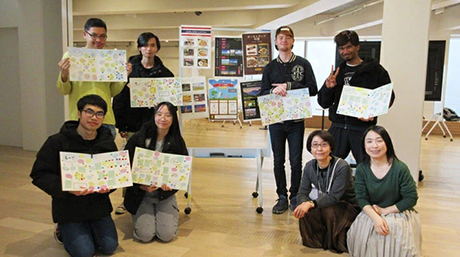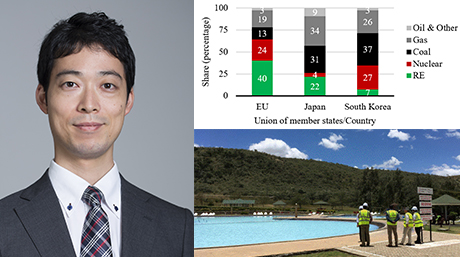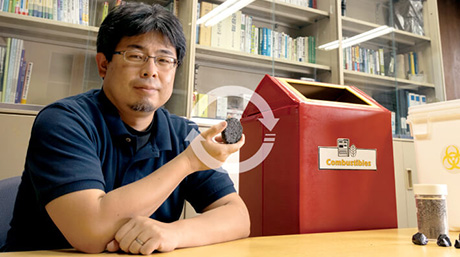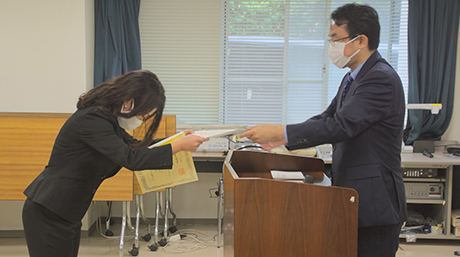Transdisciplinary Science and Engineering News
GSEP students visit Miraikan and Tokyu Construction Institute of Technology
March 11, 2021, marked a decade since the devastating Tohoku earthquake and tsunami that claimed more than 10,000 lives and displaced millions from their homes. Since then, together with the international community, Japan has been doing its best in recovery efforts.
Furthermore, research has rapidly advanced to mitigate such incidents from happening. On the same eventful day, a field trip was held for the undergraduate students under the Global Scientists and Engineers Program(GSEP)![]() of the Tokyo Institute of Technology. While maintaining the three "C's" to prevent the spread of coronavirus, the students together with the GSEP faculty and staff led by the Prof. Shinya Hanaoka(chair, TSE)visited two sites National Museum of Emerging Science and Innovation(Miraikan
of the Tokyo Institute of Technology. While maintaining the three "C's" to prevent the spread of coronavirus, the students together with the GSEP faculty and staff led by the Prof. Shinya Hanaoka(chair, TSE)visited two sites National Museum of Emerging Science and Innovation(Miraikan![]() )and Tokyu Construction Institute of Technology
)and Tokyu Construction Institute of Technology![]() .
.
Standard safety precautions were implemented during the field-trip to avoid the spread of the coronavirus. For articles written by the students, visit the official website (GSEP![]() ).
).
National Museum of Emerging Science and Innovation
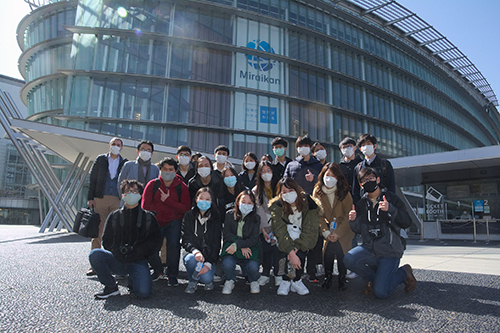
In the morning, the participants took a bus to Miraikan, which was located at Odaiba, a reclaimed land overlooking the Tokyo skyline and the majestic rainbow bridge. Arriving earlier than the appointed time, the students had a brief opportunity to walk through a small park and watch the Gundam monument. After the brief exploration, it was time to enter Miraikan. The museum demonstrates the importance of science communication. Technology and its foundation were showcased with the main objective of building knowledge and appreciation for science as a tool for humanity's advancement to the future. Miraikan is well known for ASIMO![]() and the hanging interactive globe (Geo-Cosmos
and the hanging interactive globe (Geo-Cosmos![]() ) at its center. ASIMO is the popular humanoid robot that conducts demonstrations regularly in the museum. Geo-Cosmos collects and maps big data information including weather captured by satellites. To commemorate the unfortunate natural disaster on March 11, 2011, the students were able to relive what it was like to be in Japan during that uneventful day through a special exhibition entitled, "Disaster and Future - 10 years after the Great East Japan Earthquake". In the special exhibit, the students were able to witness the struggles faced by the country during and years after the incident. With the special exhibition held in a science museum, the field trip participants became more aware of the role of scientists and engineers, with the cooperation of society, in dealing with natural disasters and mitigating their damages.
) at its center. ASIMO is the popular humanoid robot that conducts demonstrations regularly in the museum. Geo-Cosmos collects and maps big data information including weather captured by satellites. To commemorate the unfortunate natural disaster on March 11, 2011, the students were able to relive what it was like to be in Japan during that uneventful day through a special exhibition entitled, "Disaster and Future - 10 years after the Great East Japan Earthquake". In the special exhibit, the students were able to witness the struggles faced by the country during and years after the incident. With the special exhibition held in a science museum, the field trip participants became more aware of the role of scientists and engineers, with the cooperation of society, in dealing with natural disasters and mitigating their damages.
Tokyu Construction Institute of Technology

With the support of Mr. Yoji Ishibashi, a master’s degree holder and alumnus of the department under the supervision of Prof. Manabu Kanda, the students were shown around various research facilities of Tokyu Construction Institute of Technology. The group was welcomed and assisted by Dr. Satoshi Inoue (Deputy General Manager of the institute) and their impressive staff. Established in 1992, the institute belongs to the Tokyu Construction Co., Ltd., which provides construction services for housing, commercial establishments, and educational, training, and cultural facilities. Looking at their structures from the standpoint of customers and residents, it is paramount for the company to back their services with research and development. The institute continually conducts state-of-the-art research to improve its services and welcomes the public to visit its facilities. Mr. Ishibashi is entering his second year in the institute and has been researching at the Artificial Weather Chamber.
The tour group was split into two and was guided through various facilities, namely: acoustic research room, mechatronics room for robotics study, shaking table for structural integrity investigations, artificial weather chamber for atmospheric comfort studies, electromagnetic EMC research lab, and wind tunnel laboratory for inspecting proposed building effects to the neighboring atmospheric environment. Through each of the facilities, introductions were given by enthusiastic researchers, among them Mr. Ishibashi.
